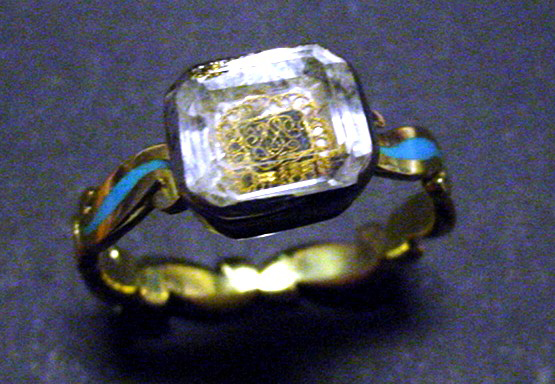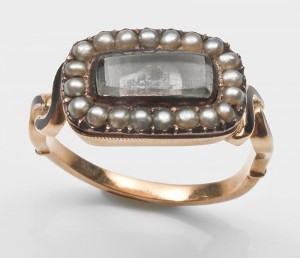Spotting Conversions and Changes in Early Rings
Jewellery is often altered, be it to turn an unfashionable item of its time, such as a slide or brooch, into something wearable and presentable, such as a ring or pendant. This piece began its life as another form of jewellery and shows all the markings of a later conversion.
Note the faux Rococo scroll-work band and its relation to the bands on these Rococo rings:
White Enamel Memento Mori Ring, 1740 for a 16 Year Old
Elaborate Rococo Memento Mori Ring, 1740
1761 Rococo Memento Mori Skull Ring
There is little similarity, as the ones above show fine attention to detail in the scroll/ribbon work of the gold and the very typical curve of the inner band. This piece is very static in its band and the mock scroll-work was obviously done at a later date. The band is also poorly soldered to the bezel, and the back of the bezel shows signs of alteration as well. Where this piece excels is in the primary reason the conversion would have been handled originally – the crystal. Being around 6x9mm, the crystal is quite large and more in tune with the turn of the 18th Century (and latter 17th Century) pieces. The gold cipher underneath is still in good condition as is the crystal itself.
This centre would have been constructed originally pre-Rococo, so the person who converted it wasn’t aware of the difference in styles. Conversions like these are common from the 19th century on, and popular ways of reusing old jewellery. Its crystal centrepiece is quite rare and still very desirable as a wonderful example of ‘Stuart Crystals’, or just for its curiosity as an altered piece.







